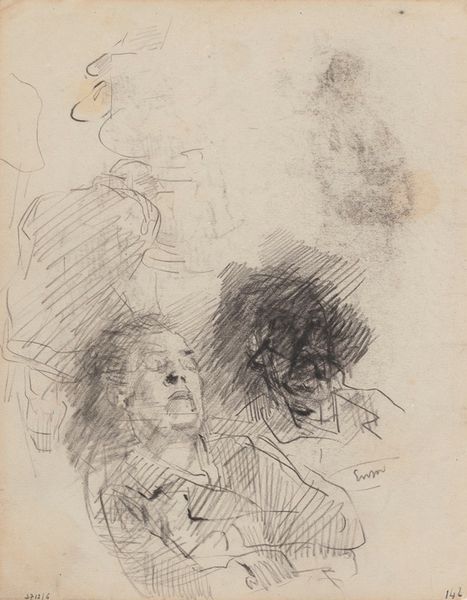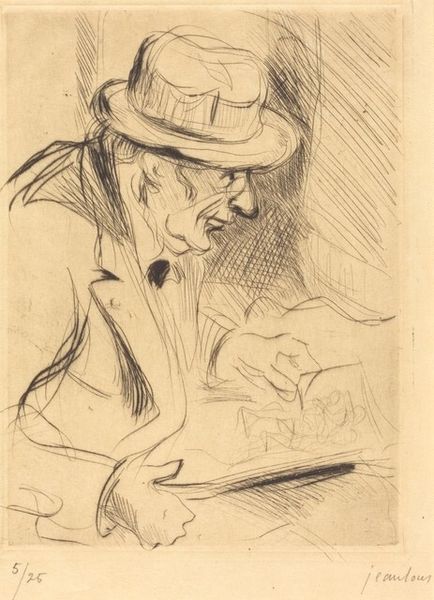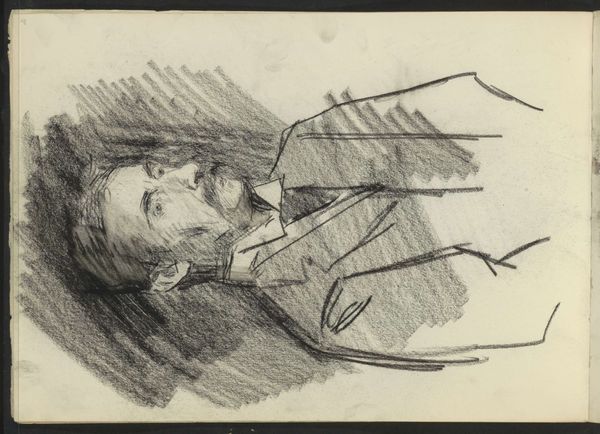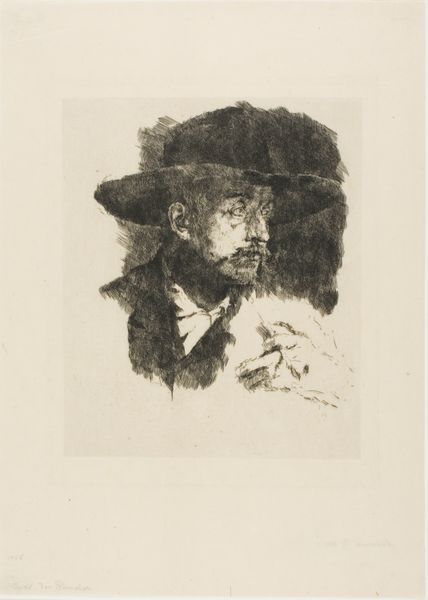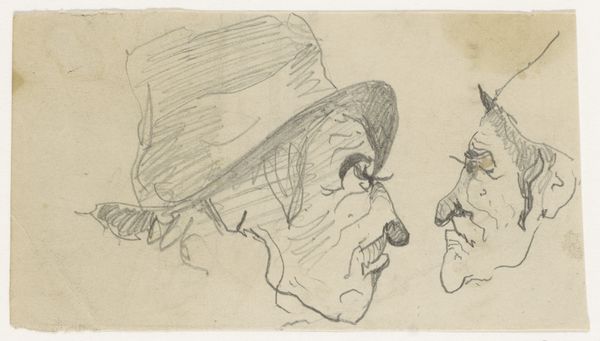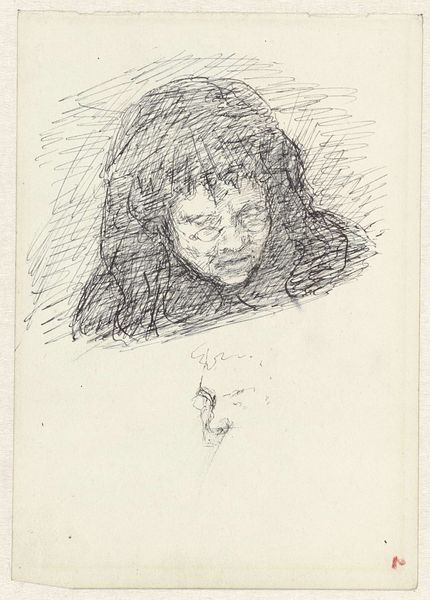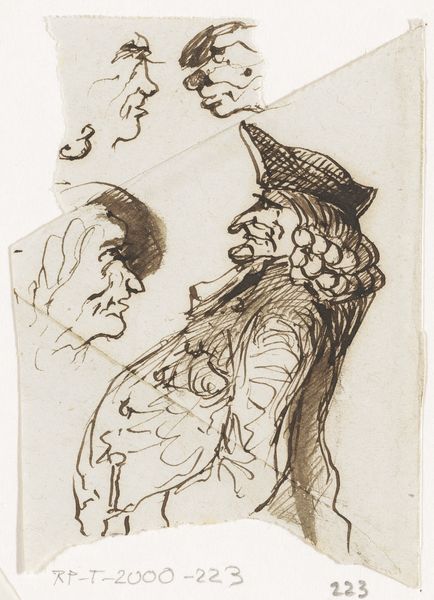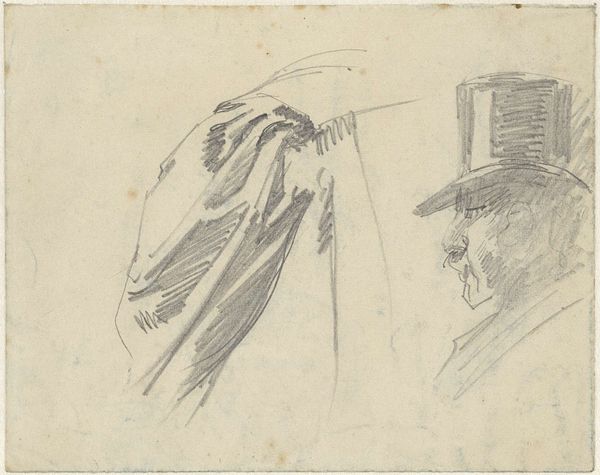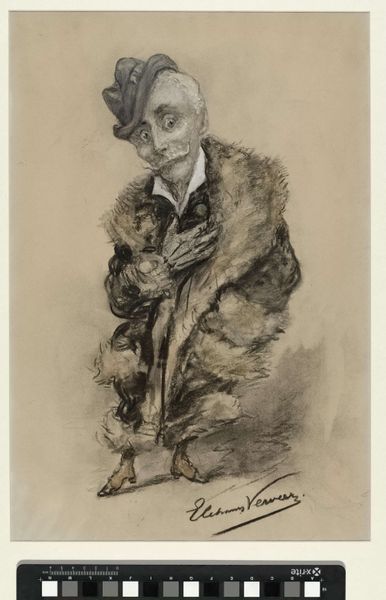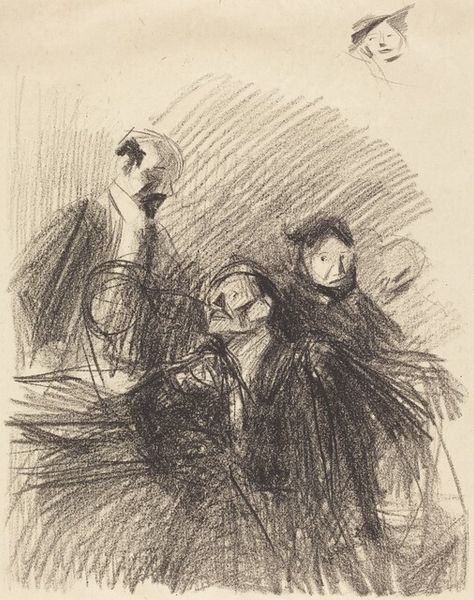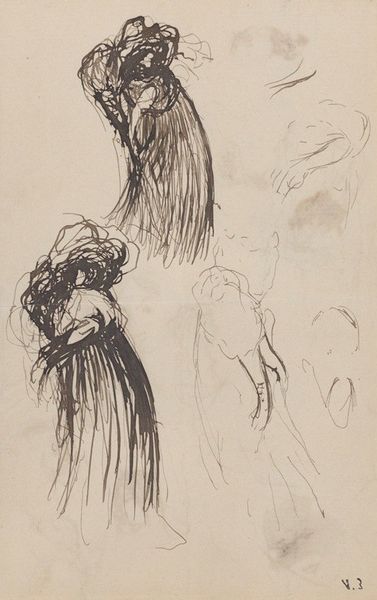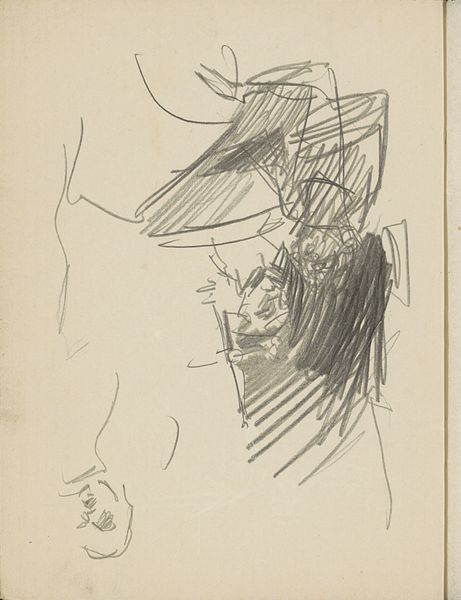
drawing, pencil
#
portrait
#
drawing
#
pencil sketch
#
pencil
#
pencil work
Copyright: Public Domain: Artvee
Curator: This drawing, entitled "The Regents of the Old Men’s Almshouse in Haarlem. Two Figures," was sketched by James Ensor sometime between 1880 and 1886, using pencil. What are your initial thoughts? Editor: Somber and a little haunting. The harsh pencil lines create a shadowy atmosphere, and the figures seem to emerge from this darkness. It definitely conveys a sense of age and perhaps the weight of responsibility. Curator: That aligns with what we know of Ensor’s interests at the time. These figures were the administrators of a charitable institution, individuals with very specific social roles. It is intriguing how the composition almost obscures one of the two characters with hatching in dark values. Editor: The figure on the left is definitely dominant. It is partially a value thing; the darkest pencil shades envelop him so that the negative space acts as a symbol of confinement. The way he is holding what looks to be a closed book, clutching it almost. Is he hiding or holding onto some part of knowledge, or is he warding off a perceived spiritual harm? Curator: It speaks to Ensor’s exploration of societal power structures, I think, the symbolic capital of religious office in this particular case. This charitable institution had long lasting historic and spiritual roots for this community. Editor: Definitely, and Ensor emphasizes that history in his sketch by including a spectral, almost phantomlike secondary figure hovering ethereally behind the central figure’s left. I'm intrigued by how his light lines suggests mortality's grip but the angle still manages to position this subject with respect. Curator: Yes, Ensor doesn’t merely depict these figures; he places them within a visual hierarchy representative of a broader historical context. I notice the composition of this sketch could be translated into another drawing where these subjects may appear to be literally entombed or sealed inside an ossuary, from how little light is distributed into the overall subject field. Editor: A subtle yet effective use of shading becomes an exploration of power and the haunting weight of time. I hadn't thought about how starkly those themes seem integrated together until now. Curator: Indeed, Ensor asks us to contemplate more than just a portrait, but how a portrait signifies its own socio-political circumstances through subtle changes. Editor: Thanks for walking me through the drawing! I hadn't previously realized how heavy such lightly laid pencils could truly be.
Comments
No comments
Be the first to comment and join the conversation on the ultimate creative platform.
